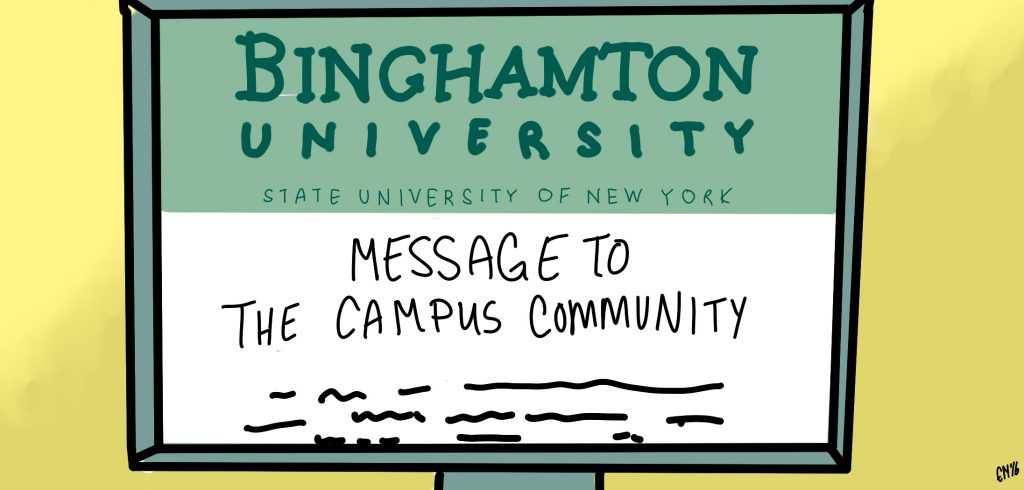Shortly after the election, a letter that originated in the sociology department was circulated and signed by multiple students, faculty members and student groups. The letter, addressed to Binghamton University President Harvey Stenger, called for the prompt release of an official statement that includes information about the support services provided by the University.
This Tuesday, six days after the presidential election, Stenger, in conjunction with Provost Donald Nieman and Chief Diversity Officer Valerie Hampton, published a statement addressing the concerns of students who feared an altered campus climate.
Whether Stenger’s statement can be seen as an act of University support, or just a response to pressure brought to him by the dozens of signatures on the aforementioned letter, it would be naive to place complete responsibility for our community on our administration. It’s tempting to pick apart each aspect of the statement and analyze its implications, but we must acknowledge that the actions of our administrators are not of utmost importance. Ours are.
At smaller colleges, campus communities can be carefully crafted, and swiftly changed, by administrators and faculty. This is not the case at Binghamton. Our campus culture is one that is particularly shaped and organized by its students, who take pride in their self-sufficiency and independence.
In his address to the students, Stenger wrote the following: “One of Binghamton University’s greatest strengths is its diversity, which creates a rich environment for faculty to teach and students to learn.”
Diversity is frequently quantified by percentages and rankings and then slapped on admissions brochures, posters and promotional videos. Yet, the value of diversity does not lie in the numbers that represent it. An institution of higher education can be portrayed as highly diverse, but if its students cluster together in communities that are comfortably isolating, then its portrayal will be only a mirage. Our university may look diverse on paper, but it is our opinion that we still have a long way to go if we want to not only have diversity, but actually be diverse.
We as students must take the first step. There is only so much that the offices and administrators at our school can do to ensure that diversity of environment and thought remain conducive; students must now actively embrace and accept other viewpoints and ideas using the art of dialogue. This can be as simple as getting to know your roommate with whom you think you have nothing in common, to attending cultural events that you might not have considered going to otherwise.
Binghamton University has never held its students’ hands. Yet as many students discover over their time here, there are many resources that must be sought out. Fellow students are one — and the most valuable — of these resources.
Stenger provided us with a list of places to turn as we embark on the next four years. But in addition to those services listed, students looking to understand and support the student body in its entirety must learn from one another. Your time at BU may be one of the only opportunities you have to interact such a wide range of perspectives. Don’t miss out.



